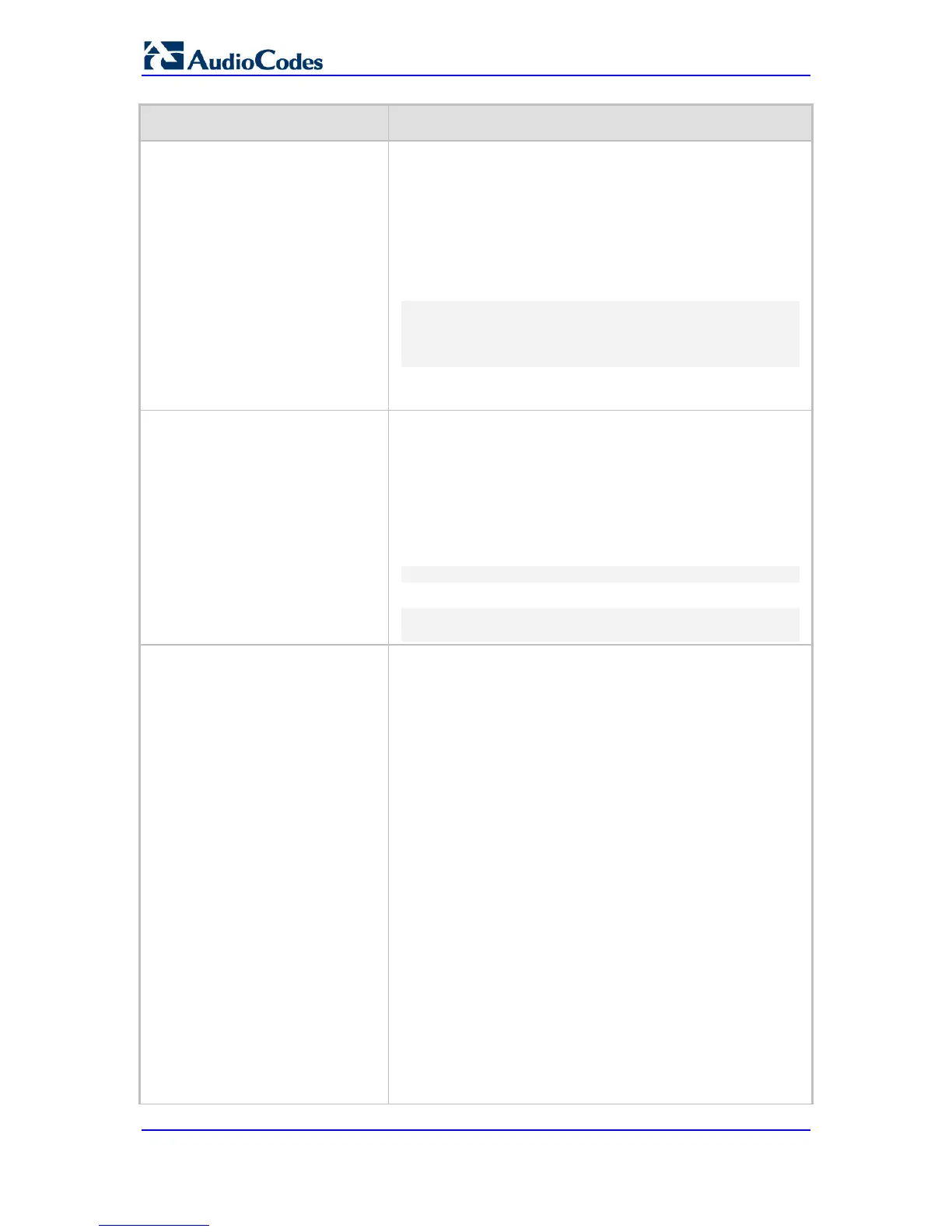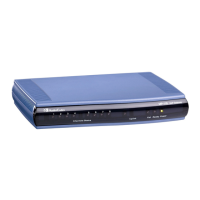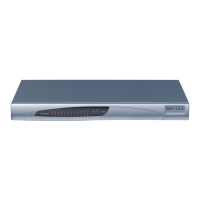username - set to the value of the private user identity
realm - set to the domain name of the home network
uri - set to the SIP URI of the domain name of the home
network
nonce - set to an empty value
response - set to an empty value
For example:
Authorization: Digest
username=alice_private@home1.net,
realm=”home1.net”, nonce=””,
response=”e56131d19580cd833064787ecc”
Note: This registration header is according to the IMS 3GPP
TS24.229 and PKT-SP-24.220 specifications.
Web: Add initial Route Header
[InitialRouteHeader]
Enables the inclusion of the SIP Route header in initial
registration or re-registration (REGISTER) requests sent by the
device.
[0] Disable (default)
[1] Enable
When the device sends a REGISTER message, the Route
header includes either the Proxy's FQDN, or IP address and
port according to the configured Proxy Set, for example:
Route: <sip:10.10.10.10;lr;transport=udp>
or
Route: <sip: pcscf-
EMS: Ping Pong Keep Alive
[UsePingPongKeepAlive]
Enables the use of the carriage-return and line-feed sequences
(CRLF) Keep-Alive mechanism, according to RFC 5626
“Managing Client-Initiated Connections in the Session Initiation
Protocol (SIP)” for reliable, connection-orientated transport
types such as TCP.
[0] Disable (default)
[1] Enable
The SIP user agent/client (i.e., device) uses a simple periodic
message as a keep-alive mechanism to keep their flow to the
proxy or registrar alive (used for example, to keep NAT
bindings open). For connection-oriented transports such as
TCP/TLS this is based on CRLF. This mechanism uses a
client-to-server "ping" keep-alive and a corresponding server-
to-client "pong" message. This ping-pong sequence allows the
client, and optionally the server, to tell if its flow is still active
and useful for SIP traffic. If the client does not receive a pong
in response to its ping, it declares the flow “dead” and opens a
new flow in its place. In the CRLF Keep-Alive mechanism the
client periodically (defined by the PingPongKeepAliveTime
parameter) sends a double-CRLF (the "ping") then waits to
receive a single CRLF (the "pong"). If the client does not
receive a "pong" within an appropriate amount of time, it
considers the flow failed.
Note: The device sends a CRLF message to the Proxy Set
only if the Proxy Keep-Alive feature (EnableProxyKeepAlive
